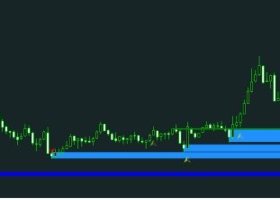US: The start of the week will see data on the housing sector, with releases for existing and new home sales. We expect existing home sales at 5.13M (-6.0%m/m) and new home sales at 515K (-5.3%m/m). Durable goods orders should see a strong rebound in January, rising to 3.0%m/m from -5.0%m/m in December. The number ex-transportation is also expected to increase, going from -1.0% in December to 0.2% in January. Personal income should rise slightly in January to 0.4%m/m from 0.3%m/m in December. Personal spending should also increase, reaching 0.3%m/m in January after a flat reading in December. We predict the PCE deflator to remain at 0.1%m/m for January (0.9%y/y) while core PCE should rise to 0.1%m/m from 0.0%m/m in December (1.5%y/y from 1.4%y/y). The FOMC left all options open at its January meeting and retained asymmetric guidance language suggesting the Committee's next policy move will be another rate hike. But the statement's dovish tone – combined with the same in Fed Chair Yellen’s Congressional testimony and the January minutes -- left the strong impression that the FOMC feels no urgency to continue hiking rates imminently. Policymakers need time to evaluate the effects of recent global economic and financial market developments. In the meantime, tighter financial conditions are already acting much like a policy firming anyway. We forecast the FOMC will wait until September before hiking its fed funds rate target again, and we expect a total of two rate hikes this year.
ECB:In the January meeting the ECB left policy rates and QE unchanged. Importantly President Draghi indicated that the ECB’s policy stance would be reviewed at the March meeting, which reinforced the existing easing bias and clearly left the door open to further easing. Draghi highlighted the risks to euro area growth of global uncertainty and made clear that the inflation path for 2016 is now significantly lower. In light of this dovishness, we are now expecting at least another 10bps depo rate cut, and likely additional tweaks to QE at the March meeting. Any broader signs of an economic slowdown, continued malaise in the markets, or a strong re appreciation of the euro – on top of the weaker CPI profile already possible for this year – raise the risks of increased action.
China: There are no major releases in the coming week.
Turkey: The monetary policy committee (MPC) kept all key short-term interest rates unchanged on 19 January. The one-week repo rate was kept unchanged at 7.50%, the lower end of the short-term interest rate corridor at 7.25% and the upper end at 10.75%. The MPC’s more cautious outlook on inflation (mainly because of the 30% minimum wage hike) did not translate into a change in its guidance on the monetary/liquidity policy stance either. The already-high run-rate of core inflation might increase further in the coming period (not only because of the minimum wage hike but also because of the recent lira depreciation), but the most likely outlook for monetary policy in the next few months remains one of unchanged short-term interest rates, in our view. Meanwhile, the MPC dropped on 19 January its reference to the normalization/simplification of the monetary policy framework, making the monetary policy outlook more obscure, in our view.


